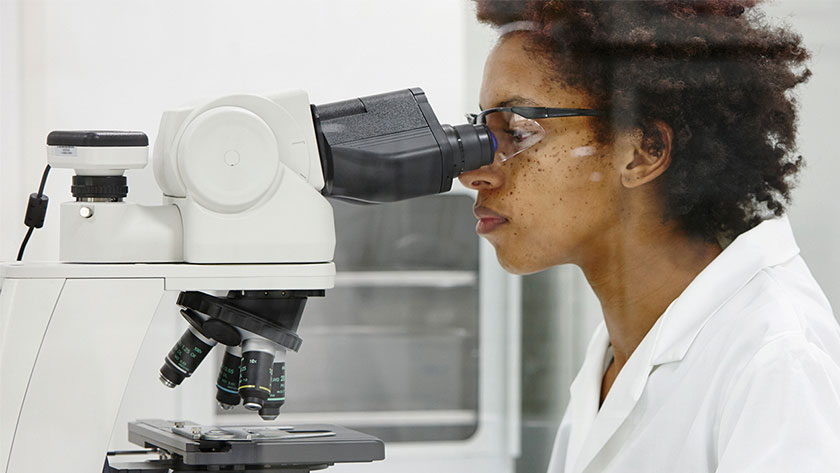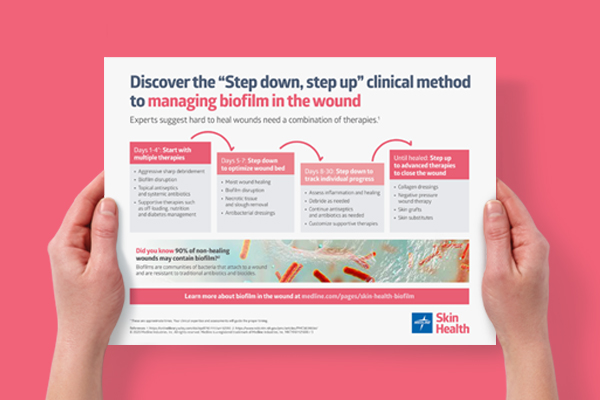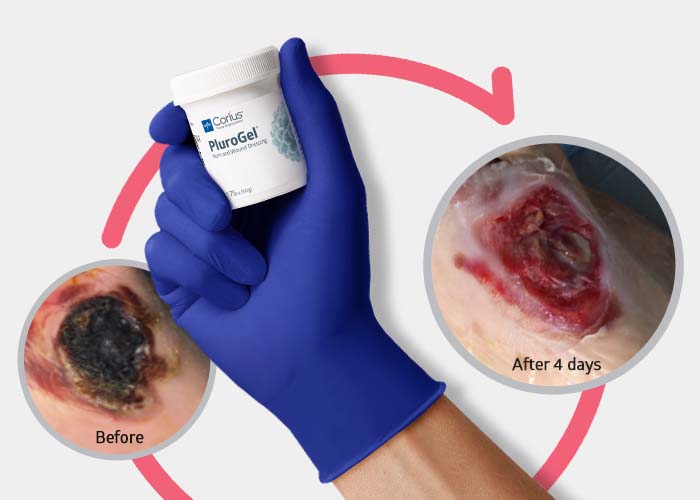Fight biofilm in chronic wounds with 2 innovative solutions

One of the biggest barriers you face with a non-healing wound is the presence of biofilm. Biofilms are communities of bacteria that attach to the wound surface and form a protective extracellular polymeric substance (EPS) that makes biofilms resistant to antibiotics. Learn more about biofilm.

One of the primary techniques to managing wound biofilm is debridement, but debridement doesn’t get rid of all biofilm.1 Experts have shown that an aggressive “Step down, step up” approach may be the key to managing biofilm.2 That’s where the latest innovations in wound care technology come in. Keep reading to discover two innovative tools that fit into a “Step down, step up” strategy to help you manage biofilm.
PluroGel Burn and Wound Dressing
What it is: PluroGel is a uniquely formulated, concentrated surfactant gel.
How it helps manage biofilm: PluroGel softens, loosens and lifts debris from the wound bed. It maintains a moist wound environment to promote autolytic debridement and has been shown to prevent and disrupt biofilm in vitro.2
Mechanism of action: PluroGel is made of surfactant molecules that link to form micelles. A hydrophilic outer surface of the micelle adds moisture to the wound bed, softening and loosening necrotic tissue, while the hydrophobic inner core traps debris. This matrix constantly expands and collapses, creating a kind of microscopic rinsing effect that softens, loosens and lifts debris from the wound bed.
What the research says: Research on an ex vivo porcine skin explant model infected with a functionally tolerant three-day biofilm showed that biofilm fully reestablished within three days of wiping wounds daily with moistened gauze. But applying wiping daily and adding an application of PluroGel reduced biofilm to undetectable levels.3


IoPlex Iodophor Foam Dressing
What it is: IoPlex is a hydrophilic antibacterial foam dressing complexed with slow-release iodine.
How it helps manage biofilm: IoPlex reduces the bacterial burden within the wound dressing and maintains a moist wound healing environment.
Mechanism of action: IoPlex is called an iodophor because iodophors are special compounds of iodine that have a carrier molecule. When the iodine breaks from the carrier molecule, it’s released in the wound dressing.
What other IoPlex innovations help fight biofilm? As a foam dressing, IoPlex is easy removed, can be cut to needed shapes and sizes, and can be stacked for better fit. In addition, the unique color change from black to white provides a visual indicator for dressing change.

Key takeaway
Biofilm presents a significant obstacle to wound healing and requires an aggressive approach to manage it. It’s important to stay abreast of the latest advances in wound care technology such as PluroGel and IoPlex, which have been shown in vitro to help manage biofilm.
Learn more about biofilm and chronic wound management:
Beating biofilm with surfactant-based wound dressings
Management of chronic wounds: Chronic wounds are chronic infections caused by biofilm
Discover a new strategy for battling the toughest biofilms
Win the battle against bioflm
Advance the wound management process
